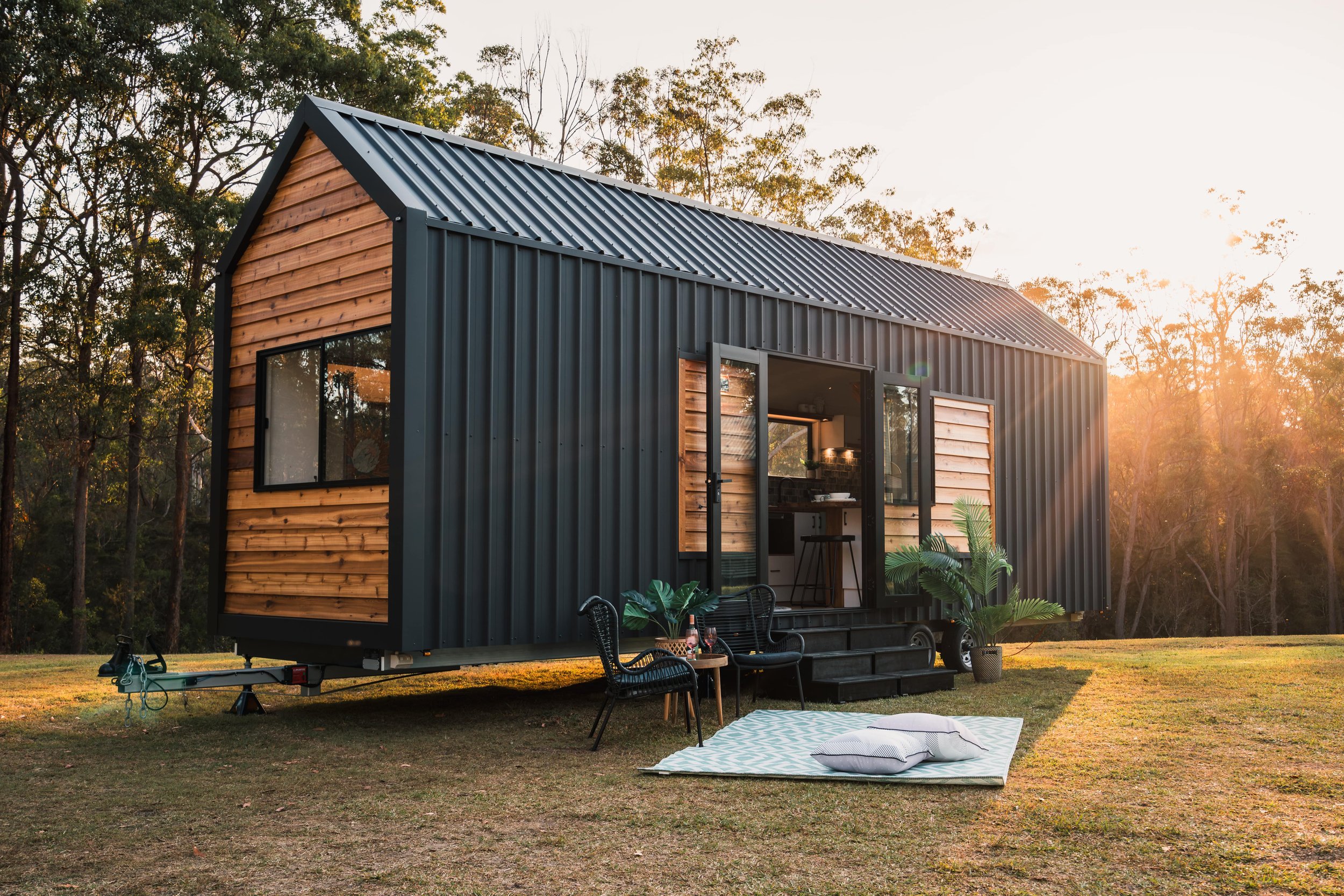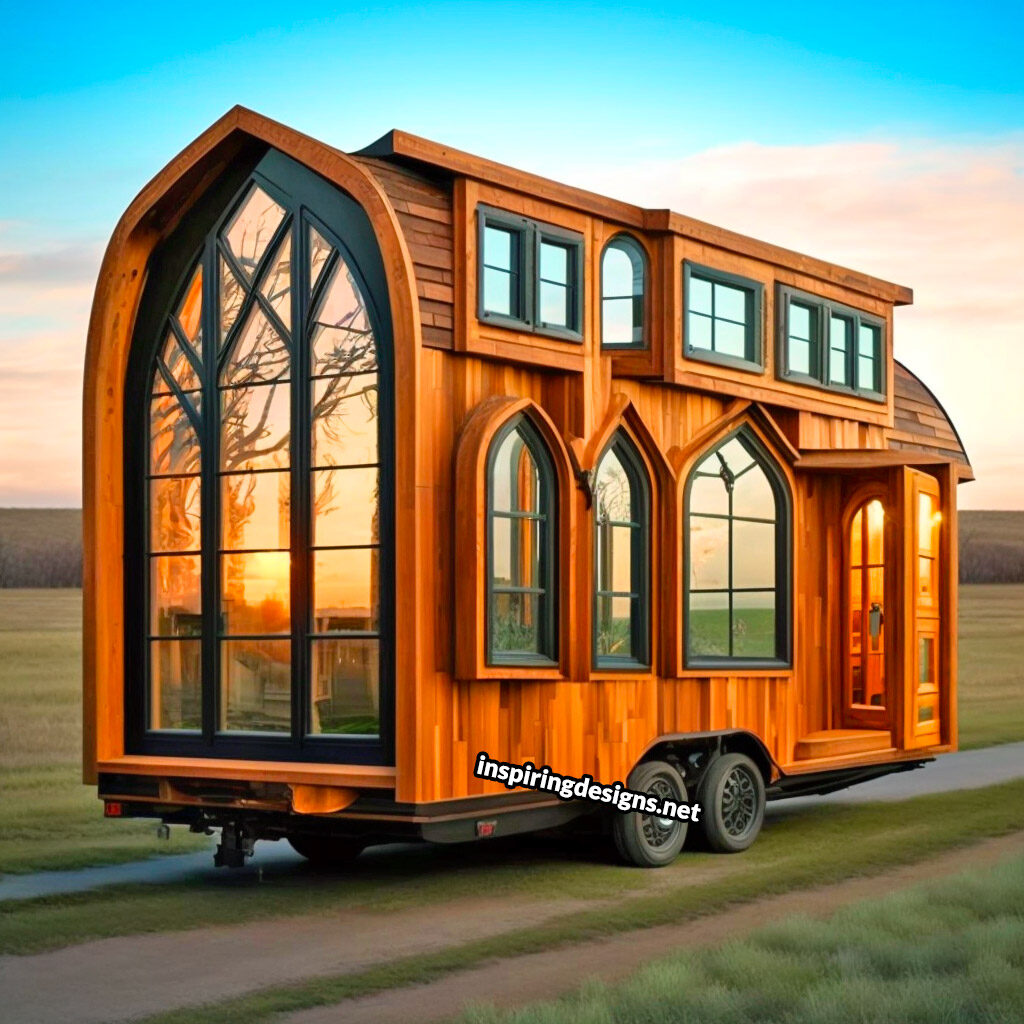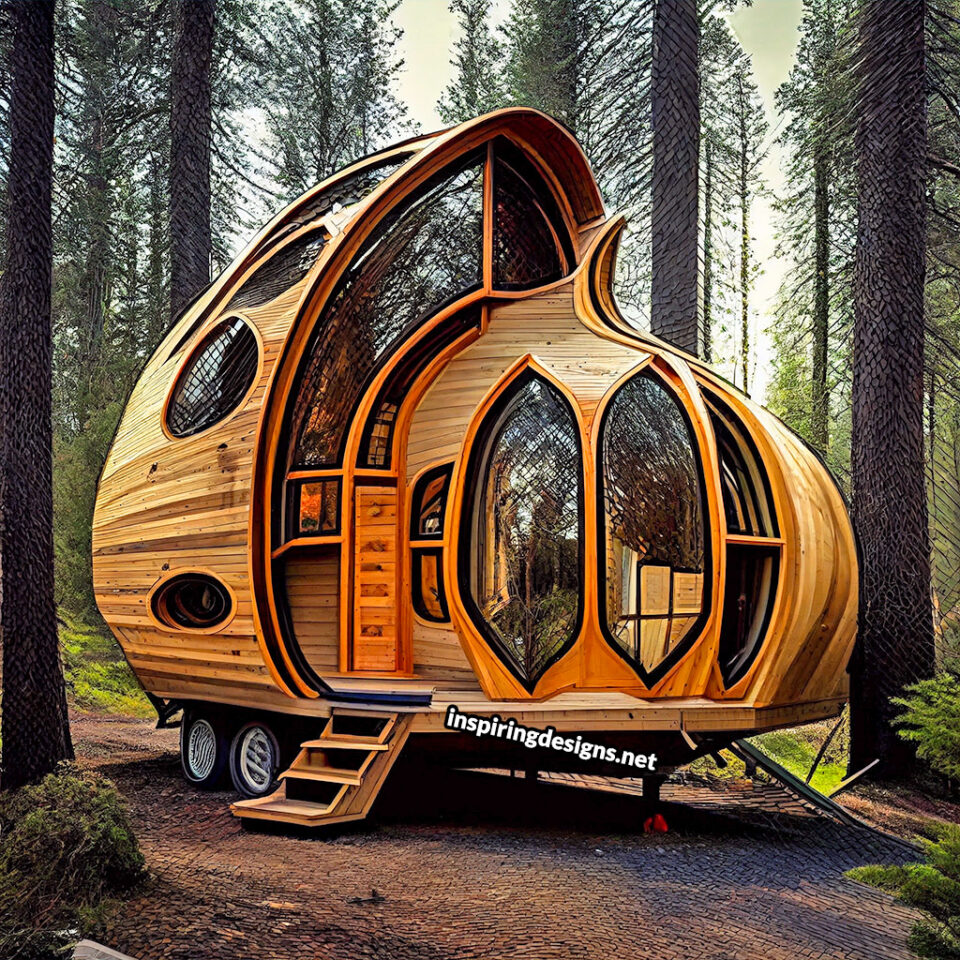Have you ever dreamed of a simpler way of living, maybe a cozy spot that's all your own, without the massive price tag of a traditional home? Perhaps you've been captivated by the idea of tiny houses, those wonderfully small dwellings that offer so much freedom. It's almost as if they whisper tales of adventure and financial ease. Yet, sometimes, the thought of building one from scratch can feel a bit overwhelming, you know? That's where something pretty special comes into the picture: tiny house shells. They are, in a way, the perfect middle ground for many aspiring small home dwellers.
These shells are, quite literally, the very basic beginnings of a tiny house. As my text explains, something "tiny" is extremely small or diminutive, significantly smaller than the usual size. So, a tiny house shell gives you that compact structure, usually with the exterior finished, but leaves the inside a blank canvas for your creative touches. It’s a chance to get the hard, weather-tight work done by pros, giving you a solid foundation, yet still letting you pour your personality into every corner.
This article will explore what tiny house shells actually are, why so many folks are choosing them, the different kinds you might come across, and what to keep in mind before you jump into this exciting venture. We'll also talk about where to find these little gems and some key things to think about to make sure your project goes smoothly. It's a pretty interesting way to get into the tiny living movement, if you ask me.
Table of Contents
- What Are Tiny House Shells, Really?
- Different Types of Tiny House Shells You Can Find
- What's Typically Included in a Tiny House Shell?
- The Benefits of Choosing a Tiny House Shell
- Important Things to Think About Before Getting a Shell
- Where to Find Your Perfect Tiny House Shell
- Frequently Asked Questions About Tiny House Shells
What Are Tiny House Shells, Really?
The Core Idea of a Shell
When we talk about tiny house shells, we're essentially looking at the bare bones of a tiny home. Think of it like a house without the furniture or the paint on the walls, just the fundamental structure. As my text points out, "tiny" means something "extremely small or diminutive," and that's precisely what these structures are: a very small, basic framework. They usually come with the exterior finished, meaning the roof, walls, and often the windows and doors are in place, protecting the inside from the weather. But, inside, it's typically just studs and subfloor, waiting for you to bring your vision to life. It's a pretty neat concept, really.
Why Start with a Shell?
Starting with a shell makes a lot of sense for many people who are interested in the tiny house movement. For one thing, it tackles some of the trickiest parts of building: getting the frame straight, putting up the exterior siding, and making sure the roof is watertight. These are big jobs that require certain skills and tools, so having them done professionally can save a lot of headaches and time. It’s also a way to spread out the costs, which is rather helpful for budgeting. You pay for the shell now, and then you can finish the interior at your own pace, as your funds allow. This flexibility is a huge draw for many, actually.
Different Types of Tiny House Shells You Can Find
Just like there are different kinds of traditional homes, there are also various forms of tiny house shells available. Each type offers its own set of advantages, depending on your needs and where you plan to put your small dwelling. It’s important to know the distinctions, so you can pick the one that fits your dreams best, you know?
- Vista Cruiser Rv
- Superman Water Bottle
- Jordan Knight Evelyn Melendez
- Xmas Street Decorations
- Raggedy Ann Doll For Sale
On-Wheels Shells
These are probably what most people picture when they hear "tiny house." An on-wheels shell is built directly onto a specialized trailer chassis. This means your tiny home, once finished, can be moved from one place to another. This mobility is a huge plus for those who love to travel or might need to relocate for work or family. The structure is built to be road-ready, often keeping weight and dimensions in mind for legal towing. It’s a very popular choice for folks seeking ultimate freedom, honestly.
Foundation Shells
Unlike their mobile cousins, foundation shells are designed to be placed on a permanent foundation, just like a regular house. This could be a concrete slab, piers, or a crawl space. These types of shells often allow for a bit more design flexibility, as they don't have the same weight or width restrictions that come with being road-legal. They are a good option for someone looking for a tiny home that stays put, perhaps in a backyard as an accessory dwelling unit (ADU) or as a primary residence on a small plot of land. They tend to feel more like a traditional home, in a way.
Kit Shells for DIY Enthusiasts
For those who really enjoy a hands-on approach, kit shells are a fantastic option. These come as a package of pre-cut materials and instructions, allowing you to assemble the shell yourself. While this requires more effort and skill on your part compared to buying a pre-built shell, it can significantly reduce the initial cost. It’s also a deeply rewarding experience to build something with your own hands, and you get to learn a lot about construction in the process. This choice is definitely for the very dedicated do-it-yourselfer, apparently.
What's Typically Included in a Tiny House Shell?
While the exact inclusions can vary a bit from one builder to another, a standard tiny house shell usually provides the essential structural elements. This means you'll typically get:
- The Frame: This is the skeleton of your tiny house, usually made of wood or steel, providing the main shape and support.
- Exterior Siding: The outside walls are covered with materials like wood, metal, or vinyl, making it weather-resistant and giving it that finished look.
- Roofing: A completed roof, often metal or asphalt shingles, to keep the elements out.
- Windows and Doors: These are usually installed, allowing natural light and providing entry points, which is rather convenient.
- Subfloor: The base layer of the floor is typically in place, ready for your chosen flooring material.
- Sheathing and Insulation (sometimes): Some shells might include the exterior sheathing and even basic insulation, offering a bit more of a head start on the interior work.
What you won't typically find in a shell are the interior finishes: no plumbing, electrical wiring, interior walls, kitchen cabinets, bathroom fixtures, or finished flooring. That's all up to you, which is pretty exciting, actually.
The Benefits of Choosing a Tiny House Shell
Opting for a tiny house shell offers a compelling mix of advantages that appeal to a wide range of people. It’s a flexible approach that can make the dream of tiny living much more attainable.
- Cost Savings: This is a big one. Buying a shell is generally much less expensive upfront than purchasing a fully finished tiny house. You save money on labor costs for all the interior work, allowing you to allocate your budget to materials and fixtures as you go. This can be a significant financial relief, honestly.
- Full Customization: Since the interior is a blank slate, you have complete control over the layout, materials, and design. Every cabinet, every paint color, every fixture can be chosen to perfectly match your personal style and needs. It’s your chance to create a truly unique space, tailored just for you.
- Learning Experience: For those who enjoy learning new skills, finishing a tiny house shell provides an incredible opportunity. You can learn about plumbing, electrical work, carpentry, and more. This hands-on experience is very rewarding and gives you a deeper connection to your home. It’s a pretty amazing way to grow your abilities, you know.
- Phased Building: You don't have to finish everything at once. You can tackle one project at a time, perhaps the bathroom first, then the kitchen, and so on. This allows you to spread out the work and the expenses, making the entire process less stressful. It’s a very manageable way to approach a big project, basically.
- Reduced Build Time for the Hard Parts: The exterior, roof, and general structure are often the most challenging and time-consuming parts of a build. Having these completed by professionals saves you a lot of effort and ensures the integrity of the weather envelope. This means you can get to the fun interior stuff much faster, which is nice.
Important Things to Think About Before Getting a Shell
While tiny house shells offer many wonderful benefits, there are several key considerations you should keep in mind before making the leap. Thinking these through beforehand can save you from unexpected surprises down the road, and that's important, really.
- Zoning and Regulations: This is probably the most crucial aspect. Local zoning laws dictate where you can place a tiny house, whether it's on wheels or a foundation. Some areas are very welcoming, while others have strict rules about size, foundations, and even how long a mobile home can stay in one spot. Always check with your local municipality before you buy a shell, as a matter of fact.
- Utilities: How will your tiny house get water, electricity, and handle waste? Will you connect to traditional utility grids, or will you go off-grid with solar panels, rainwater collection, and composting toilets? Planning for these systems is a major part of the interior finish and needs careful thought.
- Finishing Costs and Time: While a shell saves you money upfront, remember that the interior still needs to be completed. Factor in the cost of materials for plumbing, electrical, insulation, interior walls, flooring, kitchen, bathroom, and appliances. Also, consider the time commitment. Finishing a shell can take months, or even longer, depending on your skills and how much time you can dedicate to the project. It’s a pretty big undertaking, so be realistic about it.
- Your Skill Level: Be honest with yourself about your DIY abilities. While you can learn a lot, some tasks like electrical wiring or plumbing might require professional help for safety and compliance. Don't be afraid to hire out certain jobs if they are beyond your comfort zone; it can save you trouble later.
- Weight (for mobile shells): If you're getting an on-wheels shell, remember that every interior addition adds weight. You need to stay within the trailer's weight capacity and legal road limits. This means making smart choices about materials, which can be a bit of a challenge sometimes.
Where to Find Your Perfect Tiny House Shell
Once you've considered all the important factors, the next step is finding the right tiny house shell for you. There are several avenues to explore, each with its own advantages.
- Tiny House Builders: Many companies that build finished tiny homes also offer shells. This is a great option because they specialize in tiny house construction and understand the unique challenges and requirements. They often have standard shell models, but some might offer custom options too. A quick online search for "tiny house builders near me" will likely turn up several options, you know.
- Online Marketplaces: Websites dedicated to tiny homes or even general classifieds sometimes list shells for sale. These might be from smaller, independent builders or individuals who started a project but couldn't finish it. You might find some good deals here, but always do your due diligence.
- Local Crafters and Carpenters: If you prefer to support local businesses, look for independent carpenters or small construction companies in your area. They might be willing to build a custom shell to your specifications. This approach can offer a very personal touch and allow for closer collaboration on the design, which is pretty cool.
- DIY Plans and Materials Suppliers: For the most adventurous, you can purchase plans for a tiny house shell and source all the materials yourself. This is the most labor-intensive but can also be the most cost-effective way to get exactly what you want. It's a very hands-on approach, obviously.
No matter where you look, be sure to ask plenty of questions, check references, and ideally, see examples of their work. A well-built shell is the foundation of a safe and comfortable tiny home, so it’s worth taking your time to find the right one. Learn more about tiny house living on our site, and check out this page for more ideas.
Frequently Asked Questions About Tiny House Shells
People often have a lot of questions when they first start thinking about tiny house shells. Here are some common ones that tend to pop up.
How much does a tiny house shell cost?
The price of a tiny house shell can vary quite a bit, honestly. It depends on factors like its size, whether it's on wheels or for a foundation, the materials used, and how much is included in the "shell" package. Generally, you might expect to pay anywhere from $15,000 to $40,000 for a well-built shell, but prices can go higher for larger or more custom options. This is significantly less than a fully finished tiny house, which can easily run from $60,000 to over $100,000. It’s a pretty good starting point, financially speaking.
Can I live in a tiny house shell while I'm finishing it?
This is a tricky one, and the answer is usually "no," at least not comfortably or legally in most places. While the exterior of a shell is finished and weather-tight, the interior lacks essential systems like plumbing, electricity, and insulation. Living in it during construction would be very challenging and might not meet local occupancy codes. It's generally best to have another living arrangement until your tiny house is mostly complete and has all the necessary utilities and safety features in place. It’s just not practical, you know?
How long does it take to finish a tiny house shell?
The time it takes to finish a tiny house shell really depends on a few things: your skill level, how much time you can dedicate to the project each week, and your budget for materials. Some very dedicated DIYers might finish a shell in a few months, especially if they work on it full-time. For others, working on weekends or evenings, it could easily take a year or even longer. It’s a bit like any home renovation project; it often takes more time than you initially expect, so plan accordingly, you know?
Related Resources:



Detail Author:
- Name : Dr. Candido Dooley II
- Username : kuhlman.marge
- Email : clinton.lemke@little.biz
- Birthdate : 2003-09-28
- Address : 449 Lonzo Corner Port Columbus, OK 40488-3321
- Phone : 689.563.5885
- Company : Bradtke-Barton
- Job : Occupational Health Safety Specialist
- Bio : Commodi ratione totam quis ut. Inventore et ea necessitatibus vero voluptas. Temporibus necessitatibus sit omnis enim temporibus. Repudiandae qui nemo cum rem enim vel.
Socials
tiktok:
- url : https://tiktok.com/@ezequielward
- username : ezequielward
- bio : Fugit fugiat vitae ut molestiae ipsa quisquam.
- followers : 1478
- following : 881
facebook:
- url : https://facebook.com/ezequiel_official
- username : ezequiel_official
- bio : Perferendis voluptatem quia autem quisquam ut.
- followers : 2332
- following : 1281
twitter:
- url : https://twitter.com/ezequiel_xx
- username : ezequiel_xx
- bio : Delectus aut quae ratione fuga hic aspernatur ut est. Rerum sequi ipsam iste.
- followers : 1041
- following : 1969
linkedin:
- url : https://linkedin.com/in/ezequiel_ward
- username : ezequiel_ward
- bio : Et dolores distinctio consequuntur accusantium.
- followers : 2661
- following : 1683
instagram:
- url : https://instagram.com/ezequiel_ward
- username : ezequiel_ward
- bio : Est sit cum fugit dolor assumenda itaque. Odio sed qui soluta eum cupiditate aperiam nulla dolores.
- followers : 2832
- following : 2269